When it comes to mountain biking, finding the right balance between cost and performance can feel like a never-ending quest. Enter the 29er alloy hardtail frame—a design that promises the ruggedness needed for aggressive trails without breaking the bank. But does it live up to the hype?
THE CASE FOR ALLOY: AFFORDABILITY MEETS PERFORMANCE
Carbon fiber often steals the spotlight for its featherweight appeal, but alloy frames like the MK7 offer a compelling alternative. Aluminum provides a robust foundation at a fraction of the cost, making it ideal for riders who prioritize value.
The MK7's ultralight construction shaves weight without compromising strength, bridging the gap between budget-friendly and high-performance. For beginners or seasoned riders watching their wallets, alloy delivers resilience where carbon might falter—think rock strikes, crashes, or rough trail abuse.
TRAIL-READY TOUGHNESS: BUILT TO LAST
Durability is where alloy truly shines. The MK7’s hydroformed tubing reinforces critical stress points, ensuring the frame withstands repeated punishment from roots, drops, and technical climbs. Pair this with the modern 148mm Boost rear spacing, which increases wheel stiffness and compatibility with wider hubs, and you’ve got a setup that combats flex during hard cornering and accelerates efficiently. This isn’t a frame that coddles; it’s built to push limits, making it a reliable partner for everything from flowy singletrack to gnarly descents.
29ER WHEELS: THE TRAIL-SMOOTHING ADVANTAGE
The 29-inch wheels paired with this hardtail design are a game-changer. Their larger diameter rolls over obstacles with ease, maintaining momentum on climbs and reducing fatigue over long rides. While hardtails lack rear suspension, the MK7’s rigid rear triangle ensures direct power transfer, letting you tackle climbs with urgency. The 29er’s stability also complements the frame’s durability, creating a bike that feels planted and predictable when the trail gets rowdy.
HARDTAIL SIMPLICITY: LESS MAINTENANCE, MORE RIDING
Hardtails eliminate the complexity (and cost) of rear suspension, offering a lighter, more responsive ride. The MK7 leans into this ethos, with a clean design that’s easier to maintain and repair. Fewer moving parts mean fewer headaches—perfect for riders who want to spend less time tuning and more time riding.
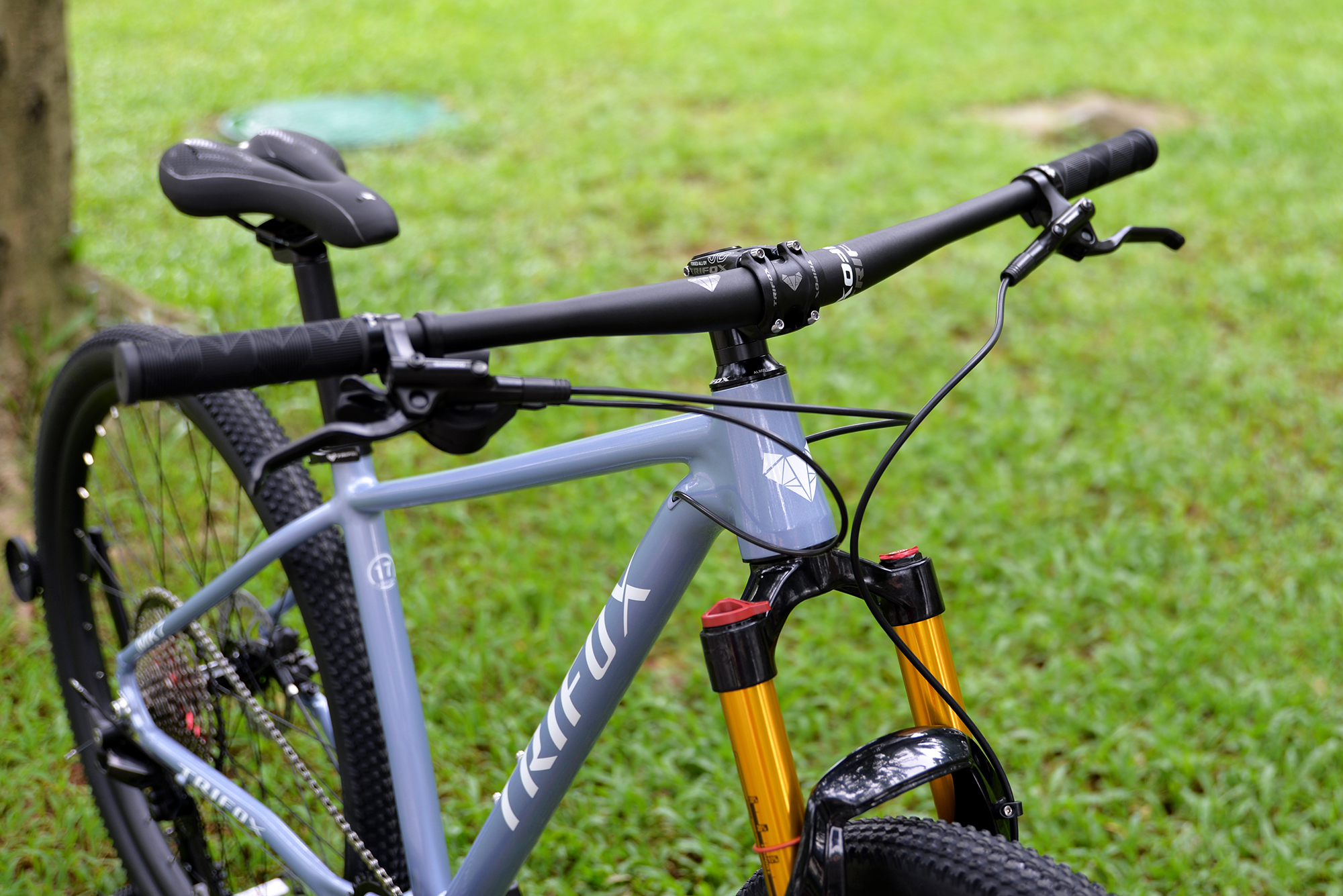
VERDICT: THE BEST OF BOTH WORLDS?
So, is a 29er alloy hardtail frame the perfect blend of affordability and durability? For most riders, the answer leans yes. The Trifox MK7 exemplifies this balance, offering a lightweight yet tough platform that thrives on diverse terrain. It's a smart choice for those seeking a capable, low-maintenance bike that won't empty their wallet.


In the world of mountain biking, agility reigns supreme. Whether carving through singletrack or tackling technical descents, responsiveness and control define your ride.
The secret to unlocking next-level off-road performance lies in two innovations: an ultralight carbon MTB frame and a Boost fork. Together, they create a synergy that elevates speed, precision, and confidence on any trail.
Ultralight Carbon Frame: The Backbone of Speed
Carbon fiber's magic lies in its strength-to-weight ratio. Trifox’s SDY20 frame exemplifies this, shedding grams without sacrificing durability. A lighter bike accelerates faster, climbs easier, and flicks through tight turns effortlessly. Carbon’s natural vibration damping also enhances comfort, reducing fatigue on long rides. But the real win is stiffness—optimal torsional rigidity ensures every watt of power translates to forward motion, while compliant seatstays absorb trail chatter for better traction.
Boost Fork: Precision Meets Stability
The Boost standard (110mm front axle spacing) isn’t just a buzzword—it’s a game-changer. Wider hub spacing increases wheel stiffness, preventing flex during hard cornering or rock strikes. This means sharper steering response and unwavering control in loose terrain. Paired with a lightweight carbon frame, the Boost fork ensures your front wheel tracks true, boosting confidence on steep descents and technical climbs.
The Dynamic Duo
Combine the SDY20's featherlight frame with a Boost fork, and agility reaches new heights. The frame's nimble character complements the fork’s stability, creating a bike that’s both quick and composed. Tight switchbacks? Effortless. Rocky descents? Unshakable. This pairing reduces rider fatigue, letting you push harder for longer.
For riders seeking an edge, Trifox’s SDY20 merges cutting-edge materials and smart engineering. It's not just about weight or stiffness—it’s how these elements harmonize to redefine off-road agility.

Mountain biking thrives on adrenaline, but as trails get gnarlier, your hardtail might struggle. So, when is it time to switch to a full suspension bike?
1. Your Terrain Demands It
If you’re tackling rocky descents, root-covered paths, or technical drops, a full suspension bike absorbs shocks better, keeping you in control. TrifoxBike’s designs, like the Trifox Full Suspension MTB, feature optimized rear travel to smooth out rough trails, reducing fatigue and improving traction.
2. Your Riding Style Gets Aggressive
Downhill shredders, jump enthusiasts, and enduro racers benefit from dual suspension. The added stability at high speeds and landings protects your body and bike. TrifoxBike’s frames balance lightweight durability with responsive suspension, ideal for pushing limits.
3. You Ride Frequently
Regular riders logging long hours need comfort. Full suspension reduces joint strain, letting you ride longer. TrifoxBike integrates ergonomic designs without sacrificing efficiency, making their bikes a smart choice for daily adventurers.
4. Your Skills Outgrow Your Bike
Advanced riders tackling steeper lines or faster corners need bikes that match their progression. Full suspension offers confidence to tackle technical features. TrifoxBike’s models support skill growth with precision handling and adjustable setups.
5. Budget Allows for Investment
While pricier than hardtails, TrifoxBike delivers high-value builds with premium components like air shocks and durable pivots. If your riding justifies the cost, it’s a worthy upgrade.
6. You Prioritize Traction
Wet, loose, or uneven terrain demands grip. Full suspension maintains tire contact, enhancing control. Pair this with TrifoxBike’s grippy tire compatibility, and you’ve got a trail-eating machine.
7. Maintenance Doesn’t Intimidate You
Full suspension requires more upkeep, but TrifoxBike’s reliable seals and accessible pivot points simplify care, ensuring longevity.
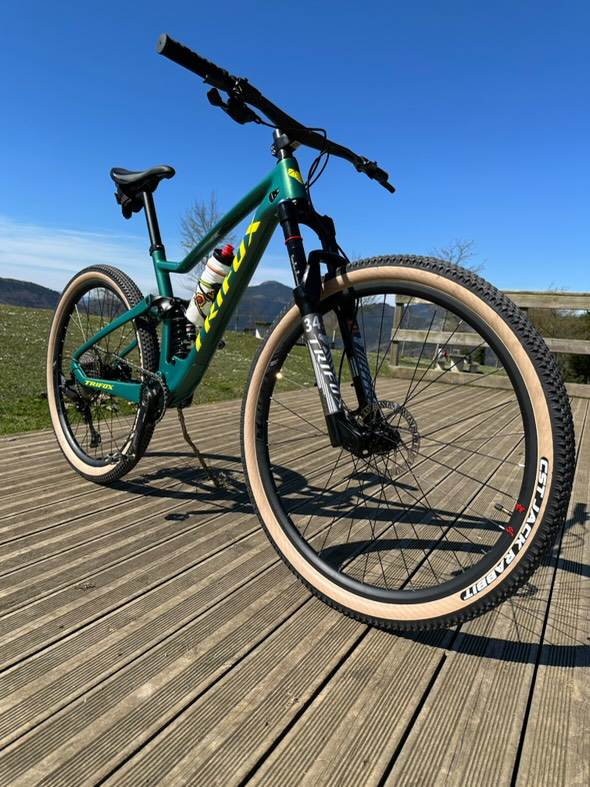
Upgrade if your trails, style, or ambition demand more. TrifoxBike’s full suspension range blends performance and value, ready to elevate your ride.
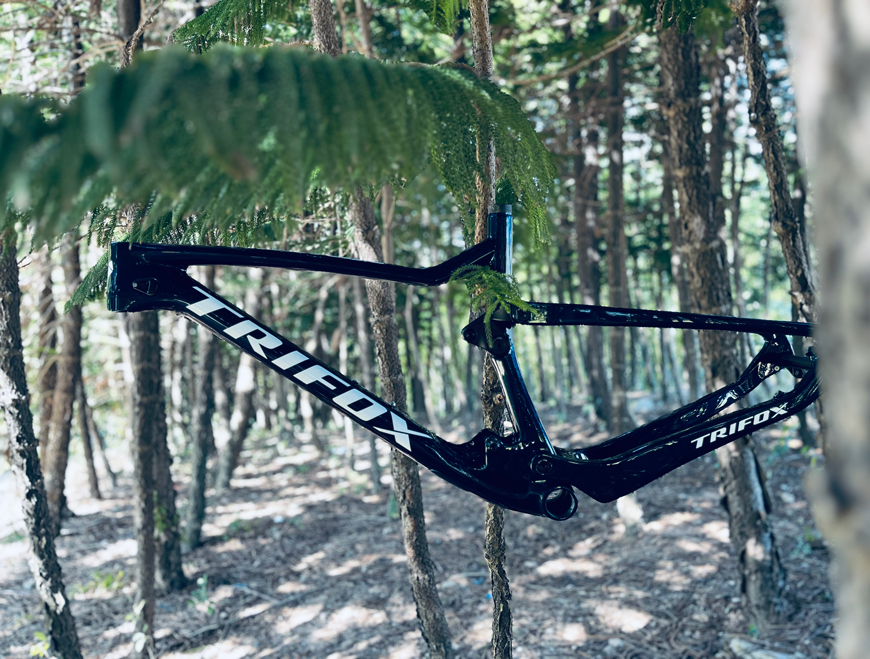
The age-old debate between hardtail (front suspension only) and full-suspension mountain bikes boils down to one question: What kind of rider are you? Let’s dissect the pros, cons, and ideal use cases for both setups to help you decide—and explore how brands like Trifox cater to diverse preferences.
Hardtail (Without Rear Suspension)
Pros:
- Lightweight: Fewer parts mean easier climbing and faster acceleration.
- Lower Cost: Affordable to buy and maintain (no rear shock or pivot bearings).
- Efficiency: Direct power transfer makes pedaling feel responsive, ideal for smooth trails or XC racing.
- Simplicity: Less maintenance and easier DIY repairs.
Cons:
- Rough Ride: Rear impacts are absorbed solely by your legs, leading to fatigue on technical terrain.
- Traction Limits: Less control on loose or rocky descents.
Full-Suspension
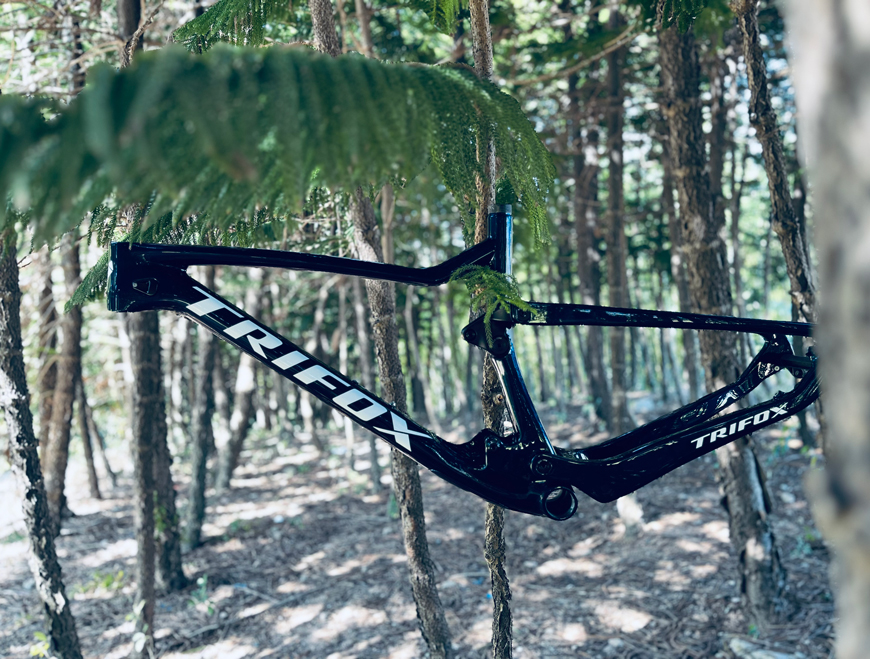
Pros:
- Comfort & Control: Rear shocks smooth out bumps, reducing fatigue and improving grip on chunky trails.
- Versatility: Confidently tackle downhill, enduro, or all-day adventures.
- Speed: Maintain momentum through rough sections.
Cons:
- Weight & Cost: Heavier frame and higher upfront/maintenance costs.
- Complexity: More moving parts mean more potential for mechanical issues.
Who Should Ride What?
- Choose a Hardtail If: You prioritize budget-friendly efficiency, ride smoother trails, or love climbing. Models like Trifox’s hardtails excel here, blending lightweight frames with trail-ready geometry.
- Choose Full-Suspension If: You crave technical descents, endurance rides, or park laps. Trifox’s full-suspension bikes offer balanced travel and durability for aggressive terrain.
Key Considerations
1. Terrain: Rocks, roots, and drops? Full-suspension shines. Pavement or flow trails? Save weight with a hardtail.
2. Budget: Hardtails cost less upfront and long-term.
3. Skill Level: Beginners may appreciate a hardtail’s simplicity; advanced riders often leverage full-squish capabilities.
There's no “better” option—only what's better for you. Hardtails reward efficiency and simplicity, while full-suspension bikes unlock technical prowess and comfort. Test both if possible, and consider Trifox’s range to match your riding style. Whether you're chasing KOMs or sending drops, the right suspension setup ensures every ride feels like freedom.

A full-suspension mountain bike is a significant investment, and riders often wonder: How long will it last? While there’s no one-size-fits-all answer, factors like usage, maintenance, and component quality play key roles. Let’s dive into durability expectations and how to maximize your bike’s lifespan—with a nod to robust options like Trifox’s full-suspension models.
Lifespan Factors
1. Frame Construction: High-quality aluminum or carbon frames (like Trifox’s) can last 5–10+ years with proper care. Stress cracks or impact damage are rare but possible in extreme conditions.
2. Suspension Components: Rear shocks and fork seals require regular servicing (annually or every 100–200 ride hours). Neglect can lead to leaks or degraded performance in 2–4 years.
3. Drivetrain & Bearings: Chains, cassettes, and pivot bearings wear fastest. Replace chains every 500–1,000 miles and pivot bearings every 1–2 years, depending on riding intensity.
4. Wheels: Rims and hubs endure constant abuse. Quality wheelsets last 3–5 years, but hard impacts or poor maintenance can shorten this.
Maintenance Matters Most
Regular cleaning, lubrication, and timely part replacements are critical. For example:
- Clean suspension stanchions after muddy rides to prevent seal damage.
- Grease pivot bolts and bearings annually to combat corrosion.
- Check torque specs on frame bolts to avoid stress fractures.
Signs It's Time to Retire Your Bike
- Frame Damage: Cracks, dents, or creaking noises signal structural failure.
- Irreparable Suspension: If rebuild kits can’t fix a soggy shock or fork, replacement is cheaper than constant repairs.
- Outdated Standards: Older bikes may lack compatibility with modern components (e.g., thru-axles, 1x drivetrains), making upgrades impractical.
Trifox Full-Suspension Bikes: Built to Endure
Models like those from Trifox prioritize durability with premium carbon frames, reliable suspension linkages, and modern geometry. Their designs balance lightweight performance with trail-tough resilience, ensuring longevity for riders who maintain their bikes diligently.
Maximizing Your Bike's Life
- Ride Within Limits: Avoid overly aggressive terrain if your bike isn’t built for it.
- Store Indoors: Protect against rust and UV damage.
- Upgrade Strategically: Swap worn parts before they compromise other components.
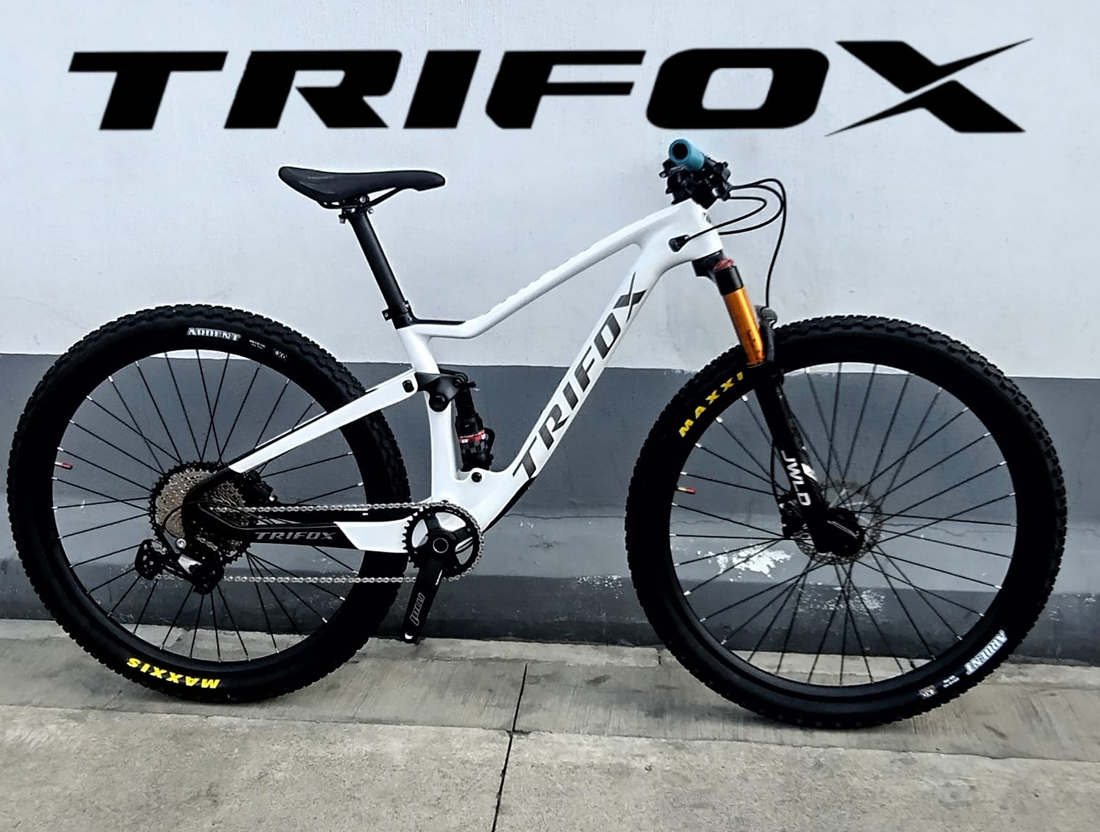
A well-maintained full-suspension bike can last a decade or more, but its “usable life” depends on how hard you ride and how proactively you care for it. Brands like Trifox offer frames engineered to endure, making them a smart choice for riders seeking longevity.
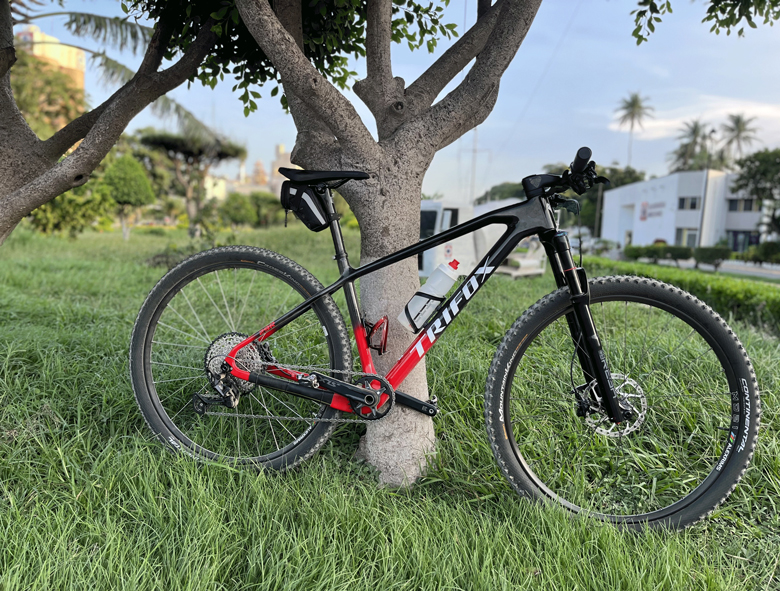
Mountain biking technology constantly evolves, and one debate among riders is whether to choose a frame with full internal cable routing.
What Is Full Internal Cable Routing?
Trifox hides brake and derailleur cables (or housing) inside the frame, creating a clean, streamlined appearance. Unlike traditional setups where cables run externally, Trifox routes them through the frame’s tubes, often exiting near components like the stem or rear derailleur.
Pros of Trifox
Aesthetics & Aerodynamics: A clutter-free frame looks sleek and may reduce drag marginally, though this matters more for racers.
Protection: Cables are shielded from mud, rocks, and trail debris, reducing wear and corrosion.
Durability: Less exposure means fewer snags on branches or accidental tugs during technical rides.
The Trifox SDY21 Frame: A Case Study
The Trifox SDY21 exemplifies Trifox done right. This lightweight carbon hardtail pairs Boost spacing stiffness with internal routing that’s thoughtfully designed. The cables enter through the headtube, minimizing friction points, and the carbon construction ensures durability without weight penalties. For riders prioritizing a clean build, it’s a compelling option.
Who Should Consider Trifox?
Weight-Weenies & Racers: The SDY21's minimalistic design shaves grams while maintaining performance.
Low-Maintenance Riders: If you prefer professional tune-ups and value long-term cable health, Trifox suits you.
Aesthetic Enthusiasts: Love a bike that looks as sharp as it rides? Internal routing delivers.
Who Should Skip It?
DIY Mechanics: If you love tweaking your bike trailside, external routing offers easier access.
Budget-Conscious Riders: Trifox frames often cost more, and installation might require extra tools.
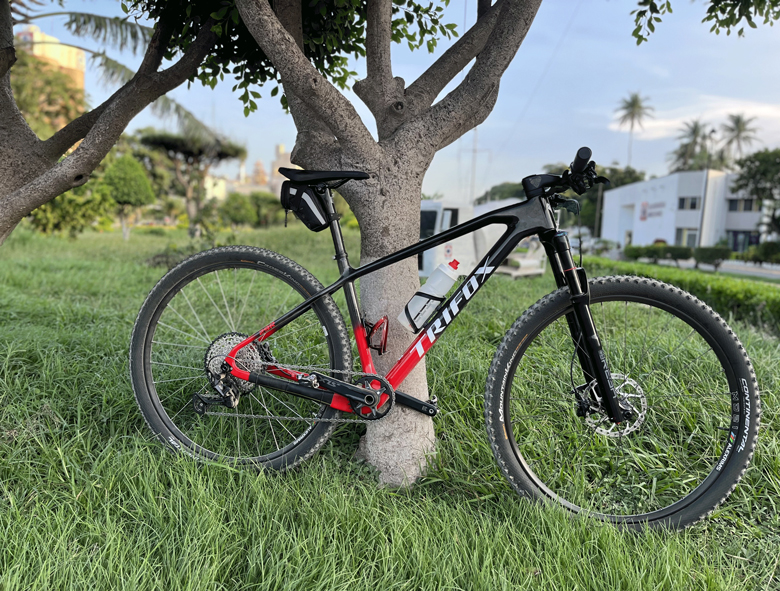
Full internal cable routing isn't a must-have, but it’s a worthy upgrade for riders valuing aesthetics, protection, and modern design. The Trifox SDY21 frame balances these perks with practical engineering, making it ideal for those ready to embrace Trifox’s trade-offs. Before deciding, weigh your maintenance habits, budget, and riding style—because the best frame is the one that matches your trail needs.
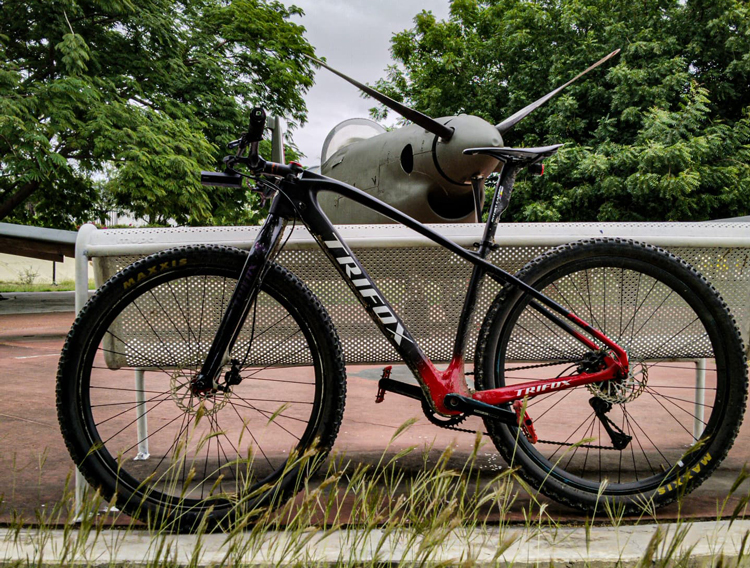
If you're in the market for a mountain bike frame upgrade, timing your purchase can make a huge difference—both for your performance and your wallet. With seasonal promotions rolling out and brands like Trifox Bike offering deals on high-quality carbon mountain bike frames, you might be wondering: Is now the best time to buy? Let’s break it down.
Why Carbon Frames?
Carbon fiber frames have become the gold standard for serious riders, combining lightweight construction with unmatched durability and vibration dampening. Whether you’re tackling rocky trails or aiming for speed on technical climbs, a carbon frame like those from Trifox Bike offers the stiffness and responsiveness needed to elevate your ride.
Seasonal Promotions & Savings
Retailers often slash prices during off-peak seasons or ahead of new model releases. Summer and fall are prime times for discounts as brands clear inventory. Right now, Trifox Bike is running promotions on their carbon mountain bike frames, making it an ideal moment to snag a premium frame at a fraction of the cost. These deals rarely last, so acting fast could save you hundreds.
Future-Proof Your Ride
Investing in a high-quality frame now ensures compatibility with the latest components, from drivetrains to dropper posts. Carbon frames are also built to last, meaning you won’t need to upgrade again anytime soon. With advancements in manufacturing, today’s frames are lighter and stronger than ever—features worth capitalizing on during a promotion.
What to Consider Before Buying
Budget: While promotions help, ensure the frame aligns with your long-term goals.
Urgency: If your current frame is holding you back, waiting might cost you more in repairs or missed rides.
Specs: Match the frame’s geometry and features (like boost spacing or suspension compatibility) to your riding style.
If you've been eyeing a carbon mountain bike frame, now is absolutely the time to buy. With Trifox Bike’s current promotion, you get top-tier engineering at a discounted price—a rare combination of value and performance. Don’t miss out; check out their lineup here and hit the trails with confidence!

Mountain biking is an exhilarating sport, but the right bike can make the difference between a thrilling adventure and a bone-jarring ordeal. In a recent video by MTB enthusiasts Andoni Arriaga, the team dives deep into the world of full-suspension mountain bikes and assembles a full-suspension bike, explaining why they’re a game-changer for riders tackling rough terrain.
Paired with insights from the video, we're spotlighting the Trifox Full-Suspension Mountain Bike—a standout model that embodies the benefits discussed. Whether you're a seasoned rider or a trail newbie, here’s why full-suspension bikes deserve your attention (and why Trifox’s offering might be your next ride).
Why Full-Suspension Bikes Shine?
1. Superior Control on Technical Terrain
Full-suspension systems absorb impacts from roots, rocks, and drops, keeping your tires glued to the ground. This translates to better handling and confidence when navigating steep descents or tight corners.
Rear suspension minimizes vibrations transferred to your body, letting you ride longer without hand, arm, or back fatigue. As the hosts joke, “Your muscles will thank you—and so will your post-ride beer.”
3. Enhanced Traction for Climbing
Unlike hardtails, full-suspension bikes maintain tire contact during climbs, preventing spinouts on loose gravel or muddy ascents.
4. Versatility Across Trail Types
From cross-country loops to downhill parks, full-suspension bikes adapt to diverse conditions. The video emphasizes that modern designs balance efficiency and plushness, debunking the myth that they’re “too slow” for flat trails.
Why the Trifox Full-Suspension Bike Stands Out?
- Carbon Fiber Performance: At $ 1599 of the Trifox PIONEER , without skimping on carbon quality.
- Customization Options: Choose your drivetrain (SHIMANO SL-M6100-R 12speeds ; SHIMANO RD-M6100-SGS 12speeds) and suspension setup to match local trails.
- Climbing Efficiency: The proprietary suspension design minimizes pedal bob, ensuring power transfer isn't wasted—a feature the video notes as critical for uphill sections.
Who Should Ride the Trifox PIONEER?
1. Aggressive Trail Riders: Tackle black diamonds and rock gardens with confidence.
2. Endurance Enthusiasts: Ride longer, thanks to reduced fatigue.
3. Tech-Terrain Explorers: The 29” wheels and plush suspension eat up roots and drops.
As the Andoni Arriaga video proves, full-suspension bikes are no longer niche—they’re essential for modern trail riding. The Trifox Full-Suspension Mountain Bike embodies the advancements discussed, offering premium specs at a mid-tier price. Whether you’re upgrading from a hardtail or seeking a do-it-all rig, this bike deserves a spot on your radar.
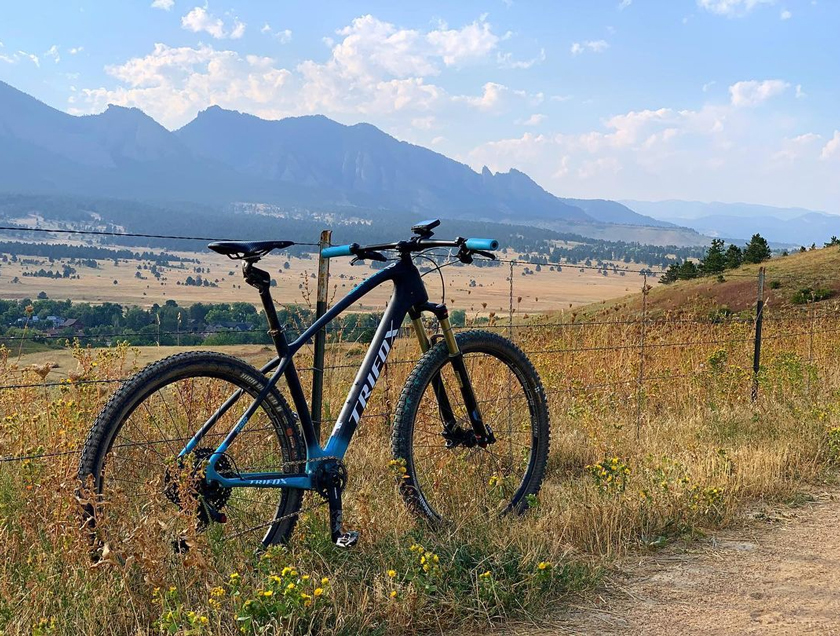
Mountain biking thrives on precision, performance, and the right gear—and nothing elevates your ride like a carbon hardtail 29er frame. Combining cutting-edge materials with smart design, this setup redefines trail agility and efficiency. Enter the Trifox MFM200, a standout example of how carbon technology and 29er geometry can transform your off-road adventures.
The Carbon Advantage
Carbon fiber's magic lies in its strength-to-weight ratio. The MFM200 frame weighs just 1,200 grams, offering featherlight handling without sacrificing durability. Carbon’s natural vibration-damping properties absorb trail chatter, reducing fatigue on long rides and keeping you in control over rough terrain. Unlike aluminum, it resists corrosion and flex, translating to sharper power transfer and a smoother ride.
Hardtail Efficiency
By ditching rear suspension, hardtails like the MFM200 eliminate weight and complexity. This design shines on climbs and fast-flowing trails, where every pedal stroke counts. Maintenance costs drop, and the direct connection to the trail enhances responsiveness—ideal for riders who prioritize speed and precision over plush suspension.
29er Wheels: Trail Domination
The 29-inch wheels on the MFM20 are a game-changer. Their larger diameter rolls over roots and rocks effortlessly, maintaining momentum and boosting confidence on technical descents. Paired with the frame's optimized geometry—a 67° head tube angle and 435mm chainstays—you get a balanced ride that’s stable at speed yet nimble enough for tight corners.
Trifox MFM200 Highlights
-Boost Hub Compatibility: The 148x12mm rear spacing ensures stiffness and compatibility with modern drivetrains.
-Internal Cable Routing: Clean lines and protected components for all-weather reliability.
-Versatile Build Options: Compatible with 100–120mm suspension forks and 1x/2x drivetrains, letting you tailor the bike to your style.
-XC-Ready Geometry: Aggressive yet comfortable positioning for long days on the trail.
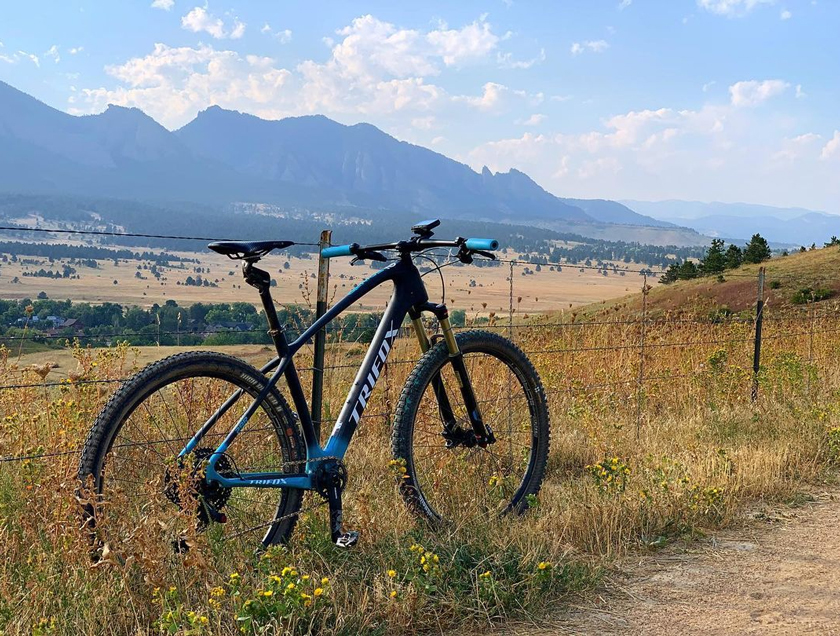
The MFM200 suits cross-country racers, endurance riders, and trail enthusiasts seeking a lightweight, efficient rig. It’s perfect for DIY builders wanting a premium carbon base without the off-the-shelf price tag. Pair it with mid-range components, and you’ll have a bike that rivals high-end models at a fraction of the cost.
The Trifox MFM200 carbon hardtail 29er frame isn’t just an upgrade—it’s a revolution. By blending lightweight performance, rugged versatility, and smart design, it unlocks new levels of speed and control. Whether you’re chasing podium finishes or weekend epics, this frame ensures every ride feels like a breakthrough.
























































